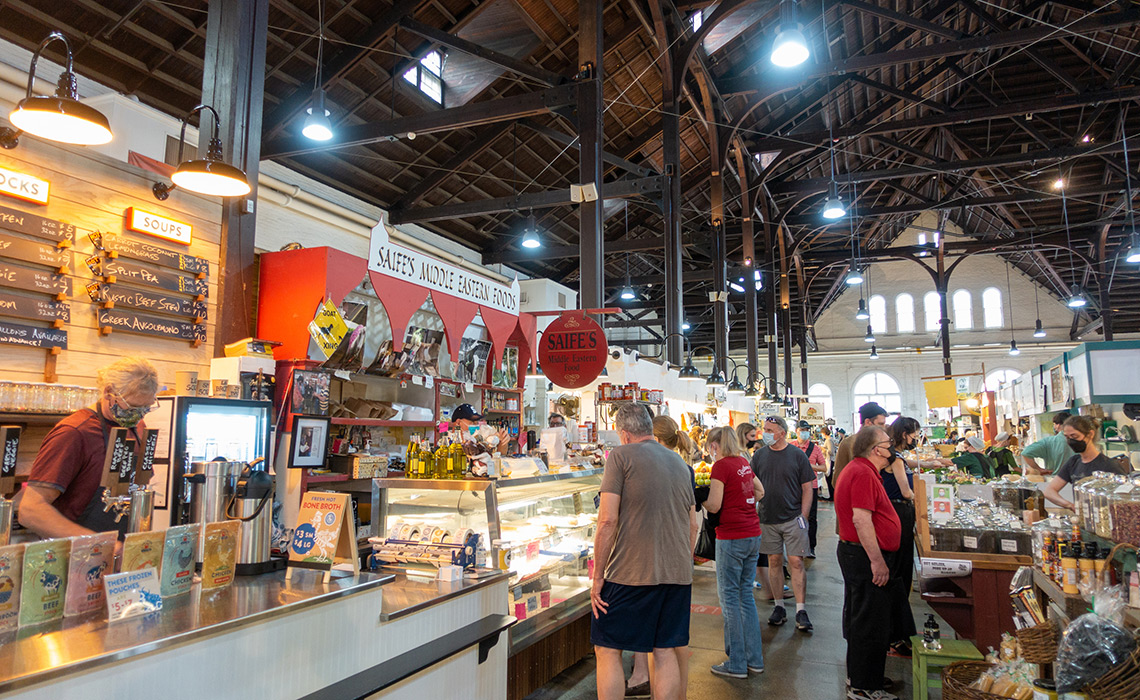Want to learn more about Amish traditions, culture, and heritage? Want to see how The Amish Village changes over the seasons? We pack our blog with helpful articles all about the Amish culture and some news about The Amish Village.
The Best Way to Experience the Amish in Lancaster, PA

Each year, Lancaster County welcomes more than 8 million tourists, and many of them are traveling here to experience what is now known as Amish Country. Visiting Lancaster means something different to locals than it does to tourists. Locals use “Lancaster” to refer to the city of Lancaster, while tourists use “Lancaster” when referring to the county as a whole. While there are many Amish families in Lancaster County, Lancaster City is not where you would look to find their homes and farms. The majority of Lancaster County’s Amish live in the more rural areas like Blue Ball, Paradise, and Ronks where the Amish Village is located. But, just because they live in rural areas doesn’t mean they don’t travel to Lancaster City and our many small towns and villages to shop and do business. In this blog, we are sorting out the difference between Lancaster City and Lancaster County to explain the history of Pennsylvania Dutch Country.
When did the Amish move to Lancaster?

In the early 1700s, the Amish were facing immense religious and cultural persecution due to the Reformation in Europe. The lifestyle they held dear, and the values they aimed to uphold while similar to many Christian beliefs, were much more conservative. This resulted in a need to leave the land they called home and seek out a new home where they could practice their faith freely. However, it wasn’t until the early 18th century that the Amish were able to migrate to the beautiful countryside of Lancaster in Pennsylvania.
Why did the Amish choose to move to Pennsylvania?

At the time of their migration, William Penn, the founder of Pennsylvania and a Quaker himself, spearheaded the “Holy Experiment”. This “Experiment” allowed for religious freedom within the borders of the state and an opportunity for many different religions to safely worship and live as they pleased. With its open landscapes, creeks, rivers, and valleys, the land and freedom from religious persecution presented itself as a perfect solution for the Amish.
Can I still see the Amish in Lancaster?

Absolutely! While Lancaster County as a whole has grown in popularity, tourism, and population, the Amish are still a fundamental part of what makes our home special. Whether it’s listening to horse hooves as buggies ride down neighborhood streets or sampling the Pennsylvania Dutch and Amish delicacies, Lancaster holds tightly to its traditions and values. The county is filled with farm stands, markets, shops, and towns where you will find both the “English” and the Amish working together and doing business. Lancaster Central Market is a great example of this. Offering a wide selection of meats, deli items, flowers, baked goods, home decor, and more, the market offers a taste of everything Lancaster has to offer all in one place.
Where can I experience the Amish way of life?

At The Amish Village, we give you a first-hand look at life within the Amish community. From seeing how the Amish live at home and touring a one-room schoolhouse to playing with the animals in the barnyard and browsing in our market, you become immersed in the Amish way of life. To enhance your experience, our Backroads Bus Tour takes you off the beaten path to see our many beautiful Amish homes and farms. Come and visit us and allow us to help you make the most of your trip to Lancaster.


